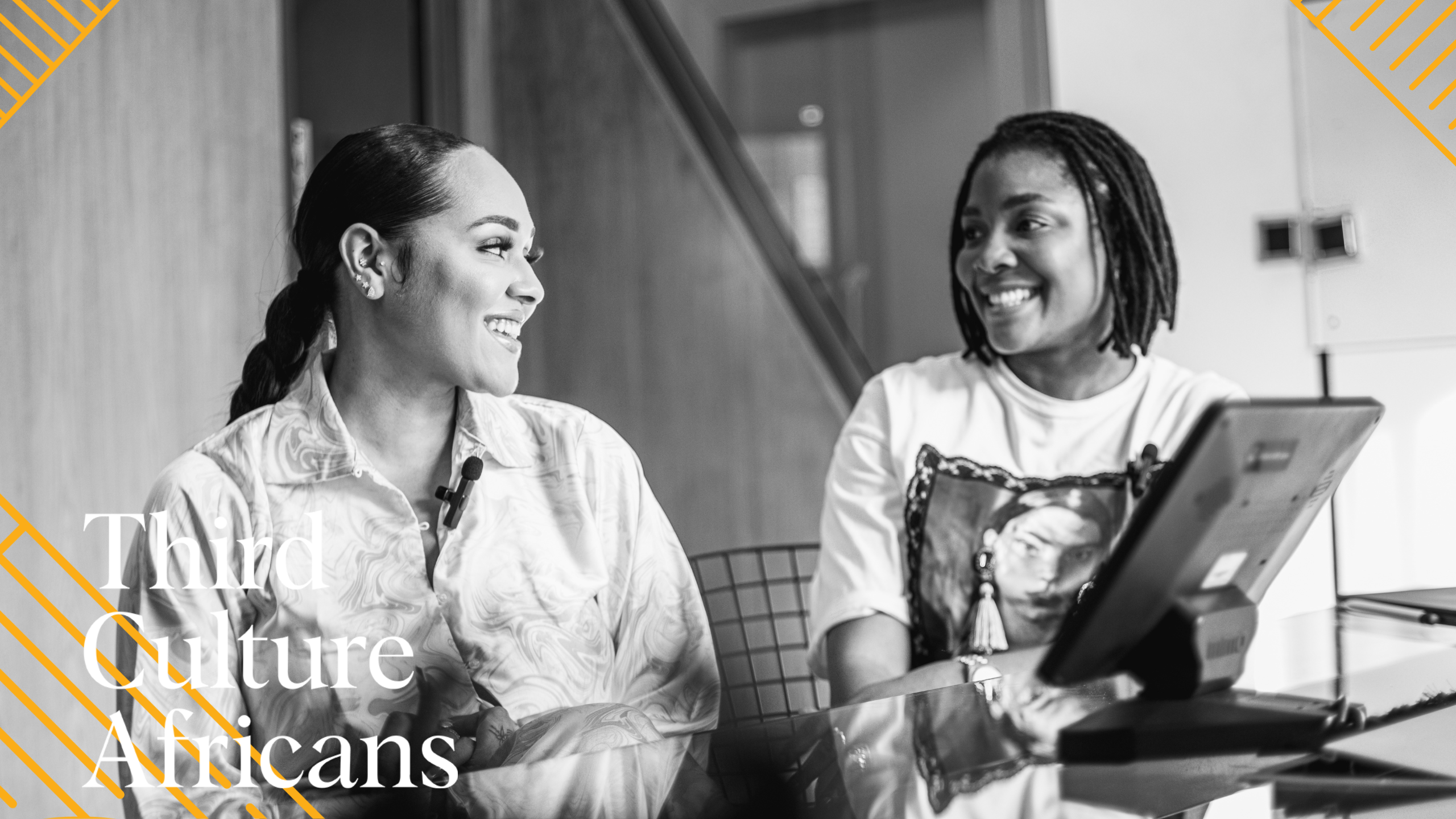Unlocking Wealth: How Media Revolutionizes Financial Education and Empowers Communities
Introduction
Welcome to a journey into the transformative power of media in shaping financial education and empowerment. In this comprehensive guide inspired by our conversations with Arese Ugwu and Nkiru Balonwu, we explore how various forms of media, from traditional to digital, are revolutionising the way people learn about personal finance, investment strategies, and wealth management.
The Role of Media for Financial Education
In today’s digital age, media channels play a pivotal role in bridging the gap between financial experts and the general public. From traditional mediums like television programs and radio shows to modern platforms such as podcasts and social media networks, media channels serve as invaluable resources for individuals seeking to enhance their financial literacy.
Television programs dedicated to personal finance, investment strategies, and wealth management offer viewers a wealth of insights from industry experts, covering topics ranging from budgeting and saving to retirement planning and investment opportunities. With engaging visuals and expert commentary, these programs break down complex financial concepts into digestible information accessible to viewers of all backgrounds.
Similarly, radio shows provide listeners with a convenient and accessible way to stay informed about financial news and trends while on the go. Whether it’s during their daily commute or while running errands, listeners can tune in to insightful discussions and interviews with financial experts, gaining valuable insights and practical tips to apply to their own financial situations.
The rise of podcasts has further democratized access to financial education, with a plethora of shows dedicated to personal finance, entrepreneurship, and wealth-building. Podcast hosts engage listeners through in-depth interviews, practical advice, and actionable strategies, empowering them to take control of their financial futures at their own pace and convenience.
Moreover, social media platforms have emerged as powerful tools for disseminating financial information and fostering community engagement. From informative blog posts and articles to live Q&A sessions and interactive polls, financial influencers and experts leverage social media to connect with audiences, share valuable insights, and promote financial literacy initiatives.
In conclusion, the media plays a crucial role in democratizing access to financial knowledge and empowering individuals to make informed decisions about their money. By leveraging various media channels, experts can reach a wider audience, breaking down barriers to financial education and equipping individuals with the tools and resources they need to achieve financial success.

Harnessing the Power of Storytelling
Storytelling is a tool for simplifying complex financial concepts and engaging audiences in meaningful ways. Storytelling has long been recognized as a powerful medium for conveying information, evoking emotions, and inspiring action. When it comes to financial education, storytelling offers a unique opportunity to break down barriers and connect with audiences on a personal level. By weaving together compelling narratives, real-life examples, and relatable characters, media content creators can make complex financial concepts more accessible and relevant to everyday life.
Through storytelling, media content creators can humanize finance, transforming abstract concepts like budgeting, investing, and retirement planning into relatable experiences that resonate with audiences. By sharing stories of individuals overcoming financial challenges, achieving their goals, and building wealth, media creators can inspire and motivate others to take positive steps towards financial empowerment.
Real-life examples and case studies serve as powerful tools for illustrating financial principles in action, showing audiences how others have successfully navigated their financial journeys and achieved their goals. Whether it’s through interviews with successful entrepreneurs, profiles of savvy investors, or testimonials from everyday individuals, these stories provide valuable insights and practical takeaways that empower audiences to make informed financial decisions.
Moreover, storytelling fosters empathy and understanding, helping audiences connect with financial topics on a deeper level. By presenting finance as more than just numbers and charts, but as stories of triumph, resilience, and hope, media content creators can engage audiences emotionally and inspire them to take action towards building a brighter financial future.
In conclusion, storytelling is a powerful tool for demystifying finance, engaging audiences, and empowering individuals to take control of their financial futures. By harnessing the power of storytelling, media content creators can make complex financial concepts more accessible, relatable, and actionable, ultimately helping to create a more financially literate and empowered society.
Interactive Learning Platforms
With the advent of technology, interactive learning platforms have emerged as powerful tools for democratizing access to financial education and empowering individuals to take control of their financial futures. These platforms leverage the flexibility and accessibility of digital mediums to provide users with engaging and interactive learning experiences that cater to their unique needs and preferences.
Online courses are at the forefront of this revolution, offering users the opportunity to learn about a wide range of financial topics from the comfort of their own homes. Whether it’s budgeting basics, investment strategies, or retirement planning, online courses provide users with comprehensive and structured learning experiences that can be completed at their own pace and convenience.
Webinars offer another avenue for interactive learning, allowing users to participate in live presentations and discussions led by financial experts. Through webinars, users can ask questions, engage with presenters, and learn from real-time examples and case studies, enhancing their understanding of complex financial concepts and strategies.
Mobile apps have also transformed the landscape of financial education, putting powerful learning tools and resources at users’ fingertips. From budgeting apps and investment trackers to financial calculators and educational games, mobile apps offer users a convenient and accessible way to learn about personal finance on the go.
Gamified learning tools add an element of fun and engagement to financial education, turning learning into a rewarding and interactive experience. Through quizzes, challenges, and interactive simulations, users can test their knowledge, track their progress, and earn rewards as they advance through various levels of learning.
In conclusion, interactive learning platforms are revolutionizing the way individuals access financial education, providing personalized and engaging learning experiences that cater to diverse learning styles and preferences. By leveraging technology to deliver interactive and accessible learning experiences, these platforms empower users to learn at their own pace and take control of their financial futures with confidence and competence.
Have You Caught Up On Our Podcast?
Learn More About Financial Education and Literacy From Industry Experts!
The Impact of Media on Financial Behavior
Studies consistently demonstrate that those who actively consume financial media exhibit higher levels of financial literacy and are more inclined to adopt positive financial practices, including budgeting, saving, and investing.
The relationship between media consumption and financial behavior is deeply intertwined, with media channels serving as potent vehicles for disseminating financial information, advice, and insights to audiences worldwide. Individuals who regularly engage with financial media, whether through television programs, radio shows, podcasts, or online platforms, are exposed to a wealth of knowledge and expertise from financial experts and industry professionals.
Studies conducted by researchers in the fields of economics and finance consistently underscore the positive correlation between media consumption and financial literacy. Individuals who consume financial media regularly tend to have a greater understanding of financial concepts, such as compound interest, diversification, and risk management, compared to those who do not engage with financial media as frequently.
Moreover, media consumption has been shown to influence financial decision-making and behavior in significant ways. Individuals who are exposed to financial media are more likely to adopt positive financial habits, such as creating and adhering to budgets, regularly saving a portion of their income, and making informed investment decisions based on their financial goals and risk tolerance.
One of the key benefits of media consumption is its ability to empower individuals to take control of their financial futures. By providing access to information, resources, and tools for financial management and planning, media channels equip audiences with the knowledge and skills they need to navigate the complexities of personal finance confidently.
In conclusion, the impact of media on financial behavior is undeniable, with studies consistently demonstrating the positive influence of media consumption on financial literacy and habits. By actively engaging with financial media, individuals can enhance their understanding of financial concepts and principles, make informed financial decisions, and ultimately achieve greater financial well-being and security.
Media Strategies for Financial Institutions
From informative blog posts and educational videos to interactive webinars and social media campaigns, these strategies position financial institutions as trusted sources of financial guidance and support in the digital age.
Financial institutions recognize the importance of leveraging media channels to connect with their customers on a deeper level and provide them with valuable insights and resources to manage their finances effectively. Through a variety of media strategies, these institutions aim to educate and empower their customers while strengthening their brand presence and fostering long-term relationships.
One of the most effective media strategies employed by financial institutions is content marketing, which involves creating and distributing informative and educational content across various channels. Informative blog posts, articles, and guides offer customers valuable insights into financial topics such as budgeting, saving, investing, and retirement planning, establishing financial institutions as trusted authorities in the industry.
Educational videos are another powerful tool for financial institutions to engage with customers and deliver valuable financial advice and insights in a visually appealing format. Through video content, financial institutions can demystify complex financial concepts, provide step-by-step tutorials on financial management strategies, and showcase their expertise and commitment to customer success.
Interactive webinars provide an opportunity for financial institutions to engage with their customers in real-time and address their specific financial needs and concerns. These live events allow customers to ask questions, interact with financial experts, and gain practical advice and guidance on a wide range of financial topics, from debt management to investment strategies.
Social media campaigns are also an integral part of media strategies for financial institutions, allowing them to reach and engage with customers on popular platforms such as Facebook, Twitter, LinkedIn, and Instagram. Through engaging content, including informative posts, interactive quizzes, and behind-the-scenes glimpses, financial institutions can build meaningful connections with their audience and enhance brand loyalty.
In conclusion, media strategies play a vital role in helping financial institutions educate, engage, and empower their customers while building trust and enhancing brand loyalty. By leveraging a variety of media channels and formats, financial institutions can position themselves as trusted sources of financial guidance and support, ultimately strengthening their relationships with customers and driving long-term success.

Empowering Communities Through Media
Through the provision of access to financial education resources and the amplification of diverse voices and perspectives, media initiatives have the power to empower marginalized communities, enabling them to overcome barriers to financial inclusion and economic opportunity.
Media serves as a powerful platform for promoting financial literacy and empowerment, particularly among underserved and marginalized communities who may face systemic barriers to accessing traditional financial education resources. By leveraging various media channels, including television, radio, podcasts, and online platforms, media initiatives can disseminate valuable financial information and resources to communities that may otherwise lack access to such resources.
Moreover, media initiatives have the capacity to amplify diverse voices and perspectives within the financial education space, ensuring that a wide range of experiences and viewpoints are represented and acknowledged. By highlighting the stories and experiences of individuals from diverse backgrounds, media initiatives can foster a more inclusive and equitable dialogue around financial literacy, empowering individuals from all walks of life to take control of their financial futures.
In addition to providing access to financial education resources, media initiatives can also serve as a platform for advocating for systemic change and addressing the root causes of financial inequality and exclusion. By raising awareness of key issues such as economic disparities, access to banking services, and discriminatory lending practices, media initiatives can mobilize communities to demand policy changes and systemic reforms that promote financial inclusion and economic justice.
Ultimately, the media has the potential to be a powerful force for social change and community empowerment, particularly in the realm of financial education. By providing access to resources, amplifying diverse voices, and advocating for systemic change, media initiatives can empower marginalized communities to overcome barriers to financial inclusion and economic opportunity, paving the way for a more equitable and prosperous future for all.
Conclusion
In conclusion, the media plays a pivotal role in advancing financial literacy, empowerment, and inclusion. By harnessing the power of storytelling, interactive learning platforms, and strategic communication strategies, media content creators and financial institutions can unlock the full potential of media for financial education and empowerment.













Hi, Neat post. There’s an issue together with your web site in internet explorer, may test this텶E still is the marketplace chief and a good component of people will pass over your fantastic writing due to this problem.
Thanks for sharing. I read many of your blog posts, cool, your blog is very good.
Can you be more specific about the content of your article? After reading it, I still have some doubts. Hope you can help me.
Peculiar article, just what I was looking for. https://evolution.org.ua/